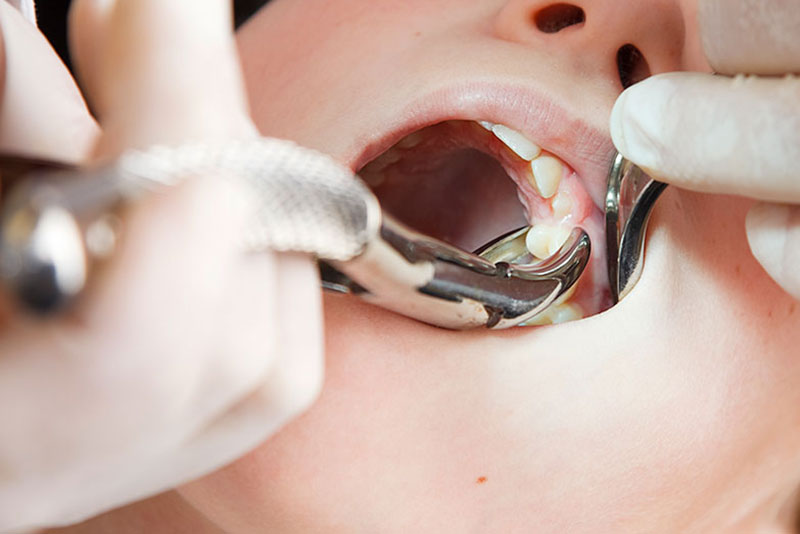
Having a tooth pulled is a significant step to preserving your smile’s overall health and integrity. Depending on which teeth are being extracted, the procedure can be a relatively simple one.
After numbing the area around your tooth — and offering any additional sedation, such as nitrous oxide — you’ll be able to feel comfortable and confident that the extraction is straightforward and gentler than you expected.
The only way to know for sure whether or not you need to have your tooth pulled, is to schedule an exam and X-ray. Once we have all of the necessary information on hand, we can help you make an informed decision about your situation.
Depending on your unique dental needs, there are usually only a few reasons why a tooth is extracted instead of being restored:
The Tooth is Non-Restorable — The most common reason for our dentist to recommend pulling a tooth is if it is no longer restorable. No filling, crown, or root canal is going to be able to save the limited healthy tooth structure that still exists. Rather than attempt to fix the tooth and hope it takes, removing it altogether is the standard of care.
For Orthodontic Purposes — It’s not as common these days, but some orthodontic patients do need to have teeth extracted to make more “room” inside of their mouth. Larger teeth in a smaller jaw, for instance, can contribute to unwanted crowding.
Impacted Wisdom Teeth — Occasionally, there will not be enough space inside of the jaw for the final set of molars — otherwise known as wisdom teeth — to erupt properly. When they become impacted against other teeth, it can lead to infections, tooth damage, or changes in the bite alignment.
Advanced Gum Disease — Without healthy gums and bone to support teeth, loss of attachment leads to them becoming mobile and sore. The infected areas around them can lead to subsequent infections. Removing teeth from severely infected areas can prevent additional tooth loss.
Planning for Full Mouth Reconstruction — When only a few natural teeth remain, it’s up to the patient and his or her dentist to decide if it’s in their best interest to create a full denture. If so, any remaining teeth will need to be extracted before a “plate” fits into the mouth.
If you’ve ever experienced a severe toothache, it’s likely one of the most painful situations that you’ve ever found yourself in. The throbbing pain can make it impossible to work through or even go about normal daily activities. All you can think about is getting the tooth out.
Although it’s usually preferable to save your tooth through some type of therapeutic or restorative methods, there are also situations when pulling the tooth is best. Especially if you need emergency pain relief. Same day tooth extractions can help you eliminate the discomfort and start on the road to recovery.
Once a tooth has been removed, the teeth next to or opposite it can start to drift out of alignment. This may be due to not having a neighboring tooth to keep it in place, or because there is not one to bite against. Gradually, other teeth in the mouth move as well. If you’ve had braces in the past or other dental work, changes in your bite can jeopardize the time you’ve invested.
In most cases, it’s best to replace your missing tooth as soon as possible. Depending on the location and your extracted tooth, replacement options include treatments like bridges, dental implants, or dentures. We’ll help you find a solution that fits your long-term smile goals and budget.
Contact Lakeside Dental today for immediate assistance, or to schedule a dental exam.